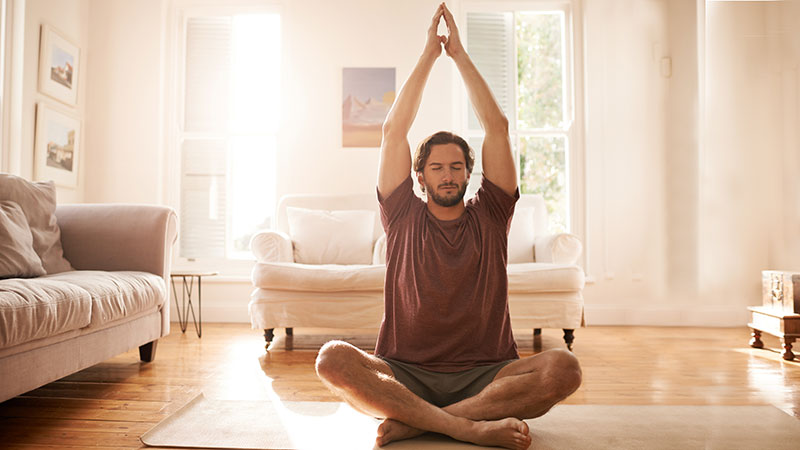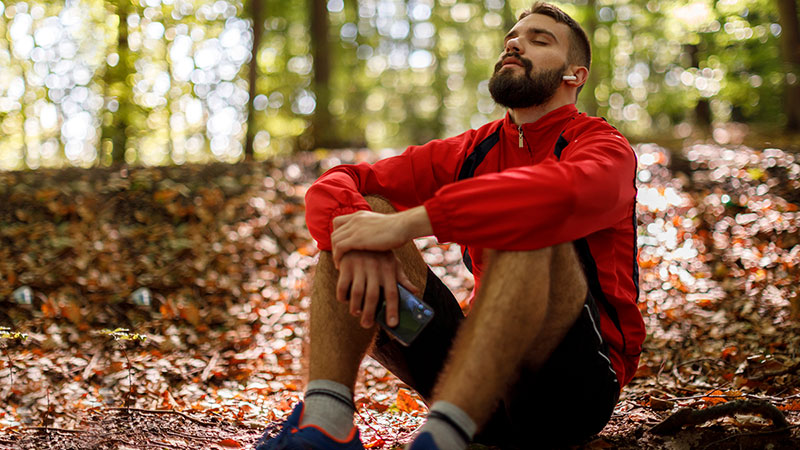You might be interested in
Health & Biotech
HeraMED teams up with Metronomic for postpartum care in US
Long Shortz
Long Shortz with Island Pharmaceuticals: Trial success with dengue fever drug
Break It Down
In an increasingly overstimulating (and let’s face it, rage-inducing) world, it’s never been more important to find ways to protect your peace.
Words by Hannah Vanderheide, at body+soul.
Do you catch yourself turning blind with rage at the sight of your partner’s dirty plate in the sink? Stopped just short of flipping the bird at that guy who cut you off this morning? Firstly, fair enough that guy was a jerk, secondly, now might be a good time to take control of your calm.
Start by taking a deep breath through your nose. Okay, now slowly let it out through your mouth. You just meditated! Nice one.
Now that you’re halfway to becoming Gandhi himself, let’s take a deeper look at the hype around mindfulness meditation and explore some expert-backed approaches to making mindfulness your thing this year.
It’s easy to dismiss mindfulness as one of those woo-woo buzzwords influencers like to throw around when they’re busy trying to sell you something. But the truth is much simpler (and cheaper) than you might think.
With roots in Buddhism, the practice has been around for thousands of years, and the breadth of its benefits is still being uncovered. It’s now used across religious and secular spaces as a means for enhancing wellbeing and controlling the body’s physical and emotional stress response.
In its simplest form, mindfulness involves cultivating a non-judgemental awareness of our thoughts, feelings and environment to better regulate our nervous system response.
“Mindfulness practices are like hitting the reset button for your brain,” says Heidi Horne, happiness and mindfulness speaker, mindset specialist and meditation coach.
“In our fast-paced world, our minds can often feel like they’re overloaded with sticky notes, or like we have too many tabs open on a computer, leading to what’s often called ‘monkey mind’ – a state of constant, restless thinking. Mindfulness offers a moment to pause and reconnect with ourselves,” she explains.

“Meditation for me was a total game changer for my nervous system,” says Rich Muir, a stress-reduction and meditation teacher from Eden Health Retreat in sunny Queensland. In his 30s, he was hit with chronic fatigue (ME/CFS), and after going down multiple rabbit holes to find something that helped, Muir says meditation proved to be vital in providing his nervous system with the “deep rest” it needed.
“I also love seeing the impact it has on others,” he shares, “it can be profound when people start to realise how much power they have in controlling their nervous system. To see someone crippled by stress and anxiety within weeks, gain a new lease on life as they learn to avoid triggering the stress response in situations that do not warrant it.”
Muir’s experience is not unique, a meta-analysis of 20 studies relating to the impact of mindfulness interventions on chronic health conditions found that mindfulness-based stress reduction practises have had a positive impact on chronically ill populations.
Research has also shown mindfulness can reduce emotional exhaustion and improve overall job satisfaction – one of the many reasons Horne grounds her corporate coaching in the principles of mindfulness. “It’s not just about reducing stress,” she explains. “It’s about enhancing our overall well-being, boosting our focus, and even improving our relationships”.
Beyond stress reduction, Horne says some of the many benefits of mindfulness include improved mental clarity, emotional intelligence (and, importantly, emotional regulation), and greater peace and overall well-being – sounds pretty bloody good to me!
One of the beautiful things about mindfulness is how accessible it is, it doesn’t cost anything to start, and it can be as simple as a few minutes per day.
“Life is busy! But stress management is crucial,” says Horne. “Here’s a simple tip: start small. Integrate mindfulness into your existing routines. For instance, take a few deep breaths before you check your email in the morning.
“While you’re waiting for your coffee to brew, try a quick body scan to notice any tension. During your commute, instead of scrolling through your phone, listen to a calming podcast or just focus on your surroundings. These small moments of mindfulness can add up, creating pockets of calm in your day without requiring extra time.”
Below, Heidi Horne shares five of her go-to mindfulness moves to get us started. These can all be performed for as little as a few minutes, so they’re ideal for even the busiest among us.
Benefits

Method
Benefits
Method
Sit or Stand quietly and notice:
Benefits
Method
Simply move through your body part by part, tensing and then relaxing each muscle group from your toes to your head.
Benefits
By now you might have picked up that becoming a master of mindfulness begins with just a few minutes out of your day.
Muir is a big believer in starting to prioritise meditation before our stress hits a critical point. “This practice acts like a release valve,” he explains, “it’s crucial to start now, before our bodies reach a breaking point, requiring more drastic measures to ‘fix the car once it’s blown a head gasket.’”
As we go about our daily lives, Muir says a lot of us are unknowingly “over-breathing” which can put unnecessary strain on our nervous systems. To combat this, he suggests bringing it back to one of the fundamentals of mindfulness practice.
“One of the simplest things people can do at any time is bring their awareness to their breath, especially in stressful situations. Slow down your breathing, focusing on slow inhales and longer exhales. By controlling our breath, we can significantly reduce stress and promote calm.”
Read More:
This article first appeared on Body+Soul, which features articles that are dedicated to helping you find the right product at the right price. They may receive revenue from affiliate and advertising partnerships for sharing this content and when you make a purchase. Learn more